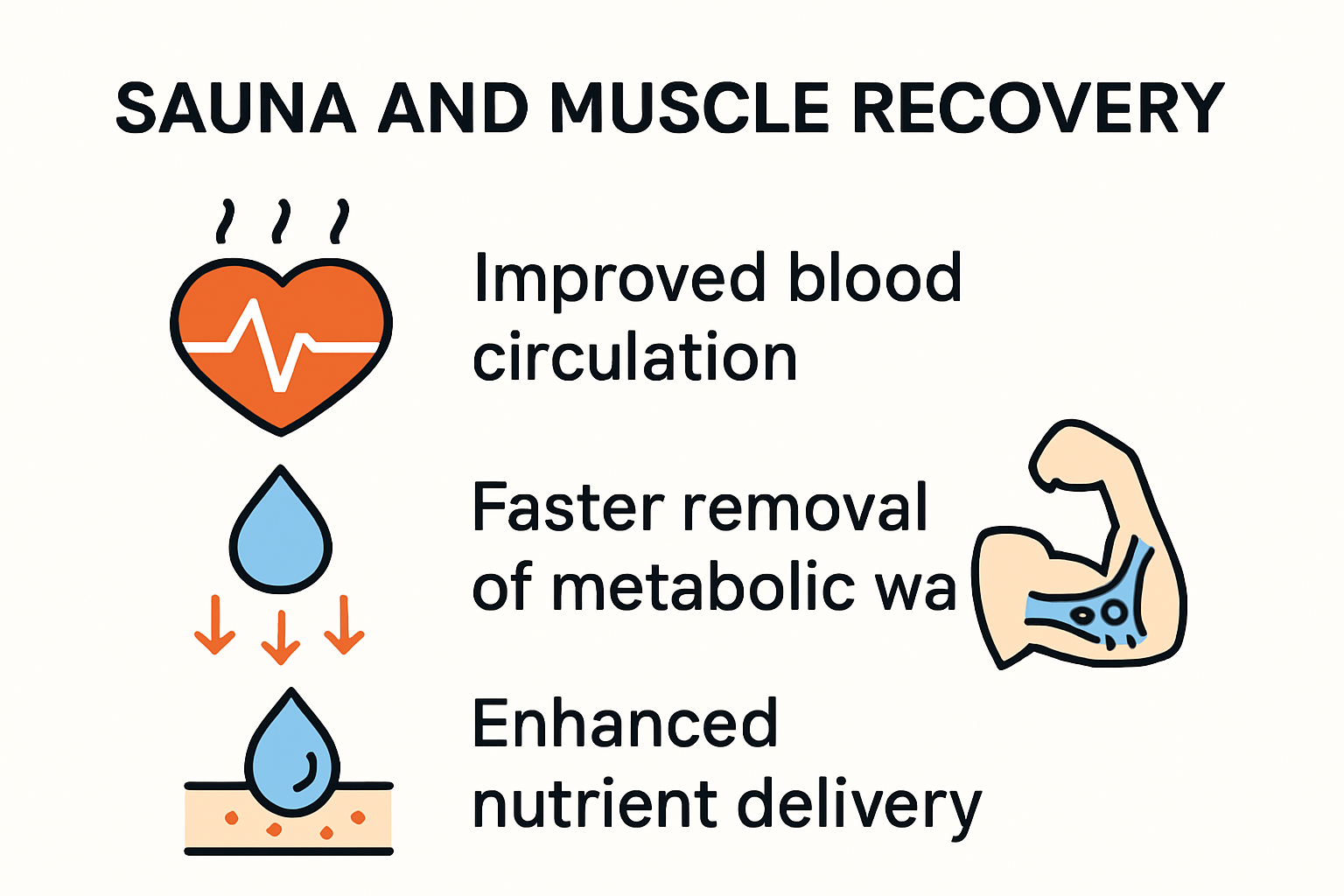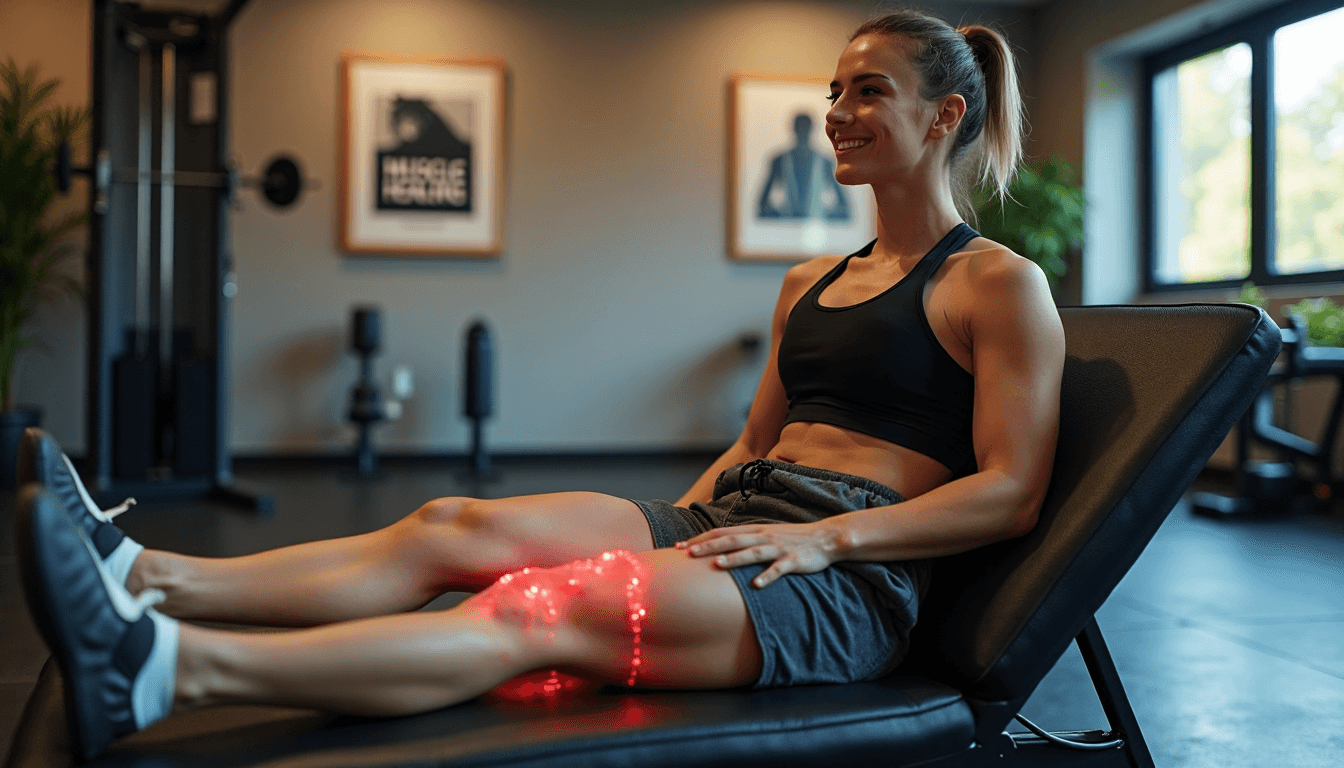
How Sauna Aids Recovery: Wellness and Relaxation Guide 2025

Saunas are more than just a luxury retreat—they play a real role in muscle recovery and mental health. Most people think of them as a simple way to unwind, but the science tells a different story. Here’s a surprise: regular post-workout sauna sessions can increase exercise endurance by a stunning 32 percent, and that is just the beginning of what’s possible for your mind and body.
Table of Contents
- Sauna Benefits For Post-Workout Recovery
- How Heat Therapy Boosts Muscle Healing
- Using Saunas For Stress Relief And Relaxation
- Choosing The Right Sauna For Your Home
Quick Summary
| Takeaway | Explanation |
|---|---|
| Sauna therapy significantly enhances muscle recovery | Post-exercise sauna sessions improve blood circulation and metabolic processes, enabling faster removal of waste products and nutrient delivery to stressed muscles, thus reducing downtime and soreness. |
| Heat therapy effectively alleviates pain and inflammation | Heat exposure post-exercise accelerates recovery by increasing blood flow and metabolism, leading to reduced muscle soreness and enhanced tissue healing, especially for delayed onset muscle soreness (DOMS). |
| Regular sauna use aids in stress management and sleep quality | Sauna sessions lower cortisol levels while boosting endorphin production, promoting relaxation and enhancing sleep patterns, contributing to overall mental and emotional wellness. |
| Choosing the right sauna involves careful consideration of types and space | Consider the size and type of sauna (traditional vs. infrared), energy efficiency, and materials used (like cedar or hemlock) to find a model that meets your wellness needs and fits your home. |
Sauna Benefits for Post-Workout Recovery
Athletes and fitness enthusiasts are constantly seeking effective recovery methods to enhance performance and reduce muscle fatigue. Sauna therapy emerges as a powerful post-workout recovery strategy that goes beyond simple relaxation. By understanding how sauna aids recovery, individuals can optimize their physical rehabilitation and overall wellness.
Accelerating Muscle Recovery and Performance
Post-exercise sauna sessions offer remarkable physiological benefits that support muscle recovery. Research involving competitive male runners revealed a groundbreaking finding: three weeks of consistent post-exercise sauna bathing increased run time to exhaustion by an impressive 32%. This significant improvement stems from increased blood volume and enhanced cardiovascular adaptation.
The heat exposure triggers multiple recovery mechanisms. When muscles experience intense stress during workouts, saunas help facilitate rapid healing through improved circulation and metabolic processes. Blood flow enhancement enables faster removal of metabolic waste products and delivers crucial nutrients to stressed muscle tissues. This accelerated recovery process reduces downtime between training sessions and minimizes potential muscle soreness.

Reducing Oxidative Stress and Inflammation
Scientific investigations demonstrate the profound impact of sauna sessions on post-exercise physiological responses. A comprehensive study on healthy men showed that Finnish sauna sessions following aerobic exercise significantly reduced oxidative stress markers. These findings suggest that heat exposure can act as a powerful tool for mitigating exercise-induced inflammation.
Moreover, recent research on infrared saunas indicates that a single session after resistance training can remarkably reduce muscle soreness and improve neuromuscular performance the subsequent day. The heat-induced stress response triggers the production of heat shock proteins, which play a critical role in cellular repair and protection.
Neurological and Hormonal Recovery Mechanisms
Beyond muscular benefits, sauna sessions engage complex neurological and hormonal recovery processes. The controlled heat stress stimulates the release of endorphins and growth hormones, which are essential for tissue repair and psychological well-being. Athletes experience not just physical recovery but also mental relaxation, creating a holistic restoration environment.
The sympathetic nervous system activation during sauna sessions promotes adaptive responses similar to those experienced during intense physical training. This process helps condition the body to manage stress more effectively, translating into improved overall resilience and recovery capacity.
By integrating sauna therapy into post-workout recovery protocols, individuals can experience a multifaceted approach to healing. The combination of improved circulation, reduced inflammation, and neurological reset provides a comprehensive recovery strategy that supports peak physical performance and long-term wellness.
How Heat Therapy Boosts Muscle Healing
Heat therapy represents a sophisticated approach to muscle healing that extends far beyond traditional recovery methods. Understanding the intricate physiological mechanisms underlying heat treatment reveals its profound potential for enhancing muscle recovery and overall athletic performance.
Physiological Mechanisms of Heat-Induced Muscle Recovery
Research from physiological journals demonstrates that targeted heat application can dramatically accelerate muscle recovery processes. When applied immediately after intense exercise and consistently for four consecutive days, heat therapy significantly enhances muscle fatigue resistance and substantially reduces perceived muscle soreness.
Metabolic Activation plays a crucial role in heat therapy’s effectiveness. Scientific studies reveal that heat increases blood flow, metabolic rates, and the elasticity of connective tissues. This enhanced circulation delivers essential nutrients to damaged muscle fibers while simultaneously removing metabolic waste products that contribute to inflammation and prolonged recovery periods.
Pain Reduction and Tissue Healing Strategies

Delayed onset muscle soreness (DOMS) represents a significant challenge for athletes and fitness enthusiasts. Comprehensive research indicates that heat therapy demonstrates remarkable efficacy in alleviating pain associated with muscle stress. Within 24 hours post-exercise, heat treatment can significantly reduce discomfort and promote faster healing.
The thermal response triggers a cascade of biological mechanisms. Heat exposure stimulates increased blood circulation, which accelerates the delivery of oxygen and nutrients to stressed muscle tissues. This process not only reduces inflammation but also supports more rapid cellular repair and regeneration.
Advanced Cellular Recovery Through Thermal Stimulation
Beyond immediate pain relief, heat therapy initiates complex cellular responses that contribute to long-term muscle health. The controlled thermal stress activates heat shock proteins responsible for protecting and repairing cellular structures damaged during intense physical activity.
Interestingly, the body’s adaptive response to heat mimics the physiological changes experienced during exercise. This means that strategic heat application can serve as a form of passive conditioning, potentially improving overall muscle resilience and recovery capacity.
Professional athletes and fitness experts increasingly recognize heat therapy as a sophisticated recovery strategy. By understanding and implementing targeted thermal treatments, individuals can optimize their muscle healing processes, reduce recovery time, and enhance overall physical performance. The integration of heat therapy represents a nuanced approach to muscle maintenance that goes beyond traditional rest and rehabilitation techniques.
Using Saunas for Stress Relief and Relaxation
In our fast-paced modern world, stress management has become a critical component of maintaining overall wellness. Saunas emerge as a powerful sanctuary for individuals seeking comprehensive stress relief and mental rejuvenation. The therapeutic environment of heat and solitude offers a unique approach to combating the physiological and psychological impacts of chronic stress.
Hormonal Regulation and Stress Response
Research from Forbes reveals that heat exposure induces profound physiological responses that help regulate hormones associated with stress. The controlled thermal environment triggers a cascade of neurochemical changes that actively counteract the body’s stress mechanisms.
Cortisol Reduction stands at the forefront of sauna’s stress-management capabilities. Cleveland Clinic reports that regular sauna use significantly reduces cortisol levels while simultaneously increasing endorphin production. This hormonal shift creates a natural mood elevation and promotes a sense of profound relaxation. The body essentially reprograms its stress response, transitioning from a state of heightened alertness to one of calm and restoration.
Sleep Quality and Mental Well-being
The connection between sauna use and improved sleep quality represents a critical aspect of stress management. Healthcare research demonstrates that consistent sauna sessions can dramatically enhance sleep patterns by promoting deep relaxation and reducing stress-related sleep disruptions.
The thermal experience creates a physiological reset. As body temperature rises during the sauna session and gradually decreases afterward, it mimics the natural temperature decline associated with preparing for sleep. This process signals the body to produce melatonin, the hormone responsible for regulating sleep cycles. Individuals who incorporate sauna sessions often report more restful, uninterrupted sleep and reduced nighttime anxiety.
Psychological Recovery and Mindfulness
Beyond physiological benefits, saunas provide a unique environment for psychological recovery. The enclosed, quiet space serves as a modern meditation chamber where external stimuli are minimized. This sensory reduction allows individuals to disconnect from digital distractions, work pressures, and constant communication.
The heat-induced relaxation promotes a meditative state, encouraging introspection and mental clarity. Many users describe the sauna experience as a form of active relaxation, where the body is engaged in a therapeutic process while the mind finds stillness. This holistic approach to stress management addresses both mental and physical dimensions of wellness.
By transforming stress management from a reactive to a proactive strategy, saunas offer more than temporary relief. They provide a comprehensive wellness intervention that recalibrates the body’s stress response, enhances mental resilience, and creates a sustainable pathway to emotional balance. Regular sauna use becomes not just a recovery technique, but a fundamental practice of self-care and holistic health maintenance.
Choosing the Right Sauna for Your Home
Selecting the perfect sauna for your home requires careful consideration of multiple factors beyond simple aesthetic preferences. This decision involves evaluating your personal wellness goals, available space, budget, and specific health requirements. Understanding the nuanced differences between sauna types can help you make an informed investment in your personal wellness journey.
Sauna Types and Space Considerations
To help you compare the different sauna types and space requirements mentioned, the following table summarizes the main features, heating methods, and suggested space planning:
| Sauna Type | Heating Method | Experience | Space Requirements |
|---|---|---|---|
| Traditional Steam | Heated rocks or steam | Hot, humid | 3x3 ft (small) – 8x12 ft (large); ~2 ft bench per person |
| Infrared | Electromagnetic panels | Dry, direct heat | Compact sizes available; flexible placement |
Heating Systems and Energy Efficiency
Energy efficiency research indicates that infrared saunas demonstrate superior energy consumption characteristics. Operating at lower temperatures between 45°C and 65°C, these units heat the body directly, resulting in reduced energy usage and faster warm-up times.
The choice of heating system significantly impacts long-term operational costs and user experience. Electric heaters provide consistent temperature control, while wood-burning options offer a more traditional atmosphere. Infrared models excel in precise temperature management and targeted heat delivery, making them increasingly popular among health-conscious consumers.
Material Selection and Durability
Here’s a table that outlines the main sauna construction materials discussed, focusing on durability, moisture resistance, and other defining features:
| Material | Durability | Moisture Resistance | Unique Features |
|---|---|---|---|
| Cedar | High | Excellent | Aromatic, resists warping, premium |
| Hemlock | Moderate | Good | Budget-friendly, lighter looks |
When evaluating materials, consider factors beyond initial appearance. Wood quality impacts heat retention, longevity, and overall user experience. Some premium woods resist warping, maintain consistent thermal properties, and contribute to a more enjoyable sauna session.
Ultimately, choosing the right home sauna transcends technical specifications. It represents a personal wellness investment tailored to your unique health goals, spatial constraints, and lifestyle preferences. By carefully evaluating heating technologies, material quality, and spatial requirements, you can select a sauna that not only fits your physical space but also supports your holistic health and relaxation objectives.
Frequently Asked Questions
What are the benefits of using a sauna after a workout?
Using a sauna post-workout can significantly enhance muscle recovery by increasing blood circulation, reducing oxidative stress and inflammation, and promoting hormonal recovery, leading to faster healing and less muscle soreness.
How does heat therapy facilitate muscle healing?
Heat therapy facilitates muscle healing by enhancing blood flow and metabolism, which helps deliver crucial nutrients to damaged tissues and removes metabolic waste, thereby accelerating the recovery process and alleviating pain associated with muscle stress.
Can regular sauna use improve my sleep quality?
Yes, regular sauna use can improve sleep quality by promoting relaxation and reducing stress hormones like cortisol. The heat exposure helps prepare the body for sleep, leading to more restful and uninterrupted night’s sleep.
What should I consider when choosing a sauna for home use?
When choosing a sauna for home use, consider the type of sauna (traditional vs. infrared), heating systems, space requirements, material durability, and energy efficiency to find the best fit for your wellness goals and living space.
Bring Home Proven Recovery with Best Life Sauna
Are you looking for a real solution to muscle soreness, slow post-workout recovery, or relentless daily stress? The insights from our wellness and relaxation guide show how heat therapy and sauna sessions can unlock faster healing, lower inflammation, and deliver lasting stress relief. Imagine feeling less pain after each workout, sleeping better every night, and building resilience for both mind and body. Your goals around accelerated muscle recovery, oxidative stress reduction, and sleep improvements are within reach.

At Best Life Sauna, you will find the right sauna to target these wellness goals. Shop a curated selection of premium saunas and discover proven benefits for your routine. Do not wait to take control of your recovery. Upgrade your space and enjoy free shipping on orders over $200. Visit Best Life Sauna now and start your journey toward less pain and more energy every day.

